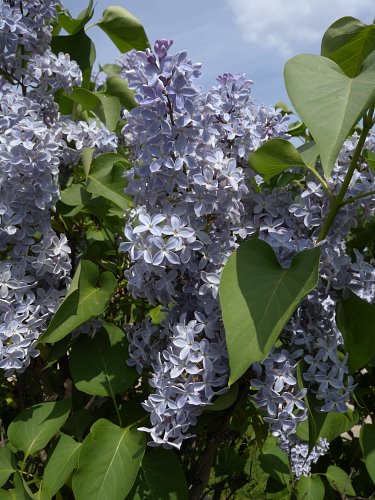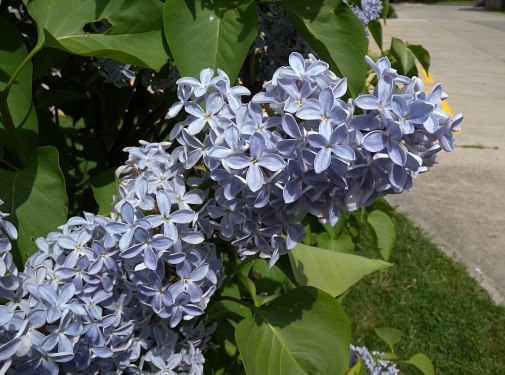
The blooming period occurs during late spring for about 2-3 weeks. The flowers are very fragrant. Fertile flowers are replaced by ellipsoid seed capsules about ½" long; the capsules are initially green, but they become brown at maturity, dividing into 2 segments. Each capsule contains up to 4 seeds. The seeds are somewhat flattened and winged; they are distributed to some extent by the wind. The root system gradually develops clonal offsets that can form a thicket of shrubs after a sufficient length of time. The deciduous leaves become yellowish brown during the autumn.
Cultivation: The preference is full or partial sun and moist to dry-mesic conditions. Different types of soil are tolerated if they are not too acidic or poorly drained. The leaves of Common Lilac are often damaged by powdery mildew, although some cultivars are highly resistant to this disease. The flowers are sometimes ruined by a late spring frost.

Range & Habitat: The non-native Common Lilac has naturalized in only a few scattered counties in Illinois (see Distribution Map); it rarely escapes from cultivation. This shrub was introduced into North American from Europe as an ornamental landscape plant; it is native to SE Europe. Habitats consist of vacant lots, roadsides, thickets, and areas around abandoned dwellings, where there has been a history of disturbance.
Faunal Associations: The nectar of the flowers attracts long-tongued bees, butterflies, and possibly moths. The caterpillars of several moths feed on the foliage and other others parts of Common Lilac. These species include Caloptilia syringella (Lilac Leaf-Miner), Harrisimemna trisignata (Harris' Three-Spot), Olceclostera angelica (The Angel), Podosesia syringae (Lilac Borer Moth), Callosamia promethea (Promethea Moth), Ceratomia undulosa (Waved Sphinx), Hyalophora cecropia (Cecropia Moth), Paratrea plebeja (Plebeian Sphinx), Sphinx chersis (Great Ash Sphinx), and Sphinx kalmiae (Laurel Sphinx). Among vertebrate animals, the Common Redpoll eats the buds of lilacs (DeVore et al., 2004).

Photographic Location: The apartment complex of the webmaster in Urbana, Illinois.
Comments: Among the different Syringa spp. (Lilacs) that are cultivated, Common Lilac is the only species that has naturalized within the state. It does not appear to be aggressive. The fragrant flowers are very showy and distinctive. The floral oil that is responsible for this fragrance has been extracted commercially and it is used in the manufacture of scented soaps and other household items.